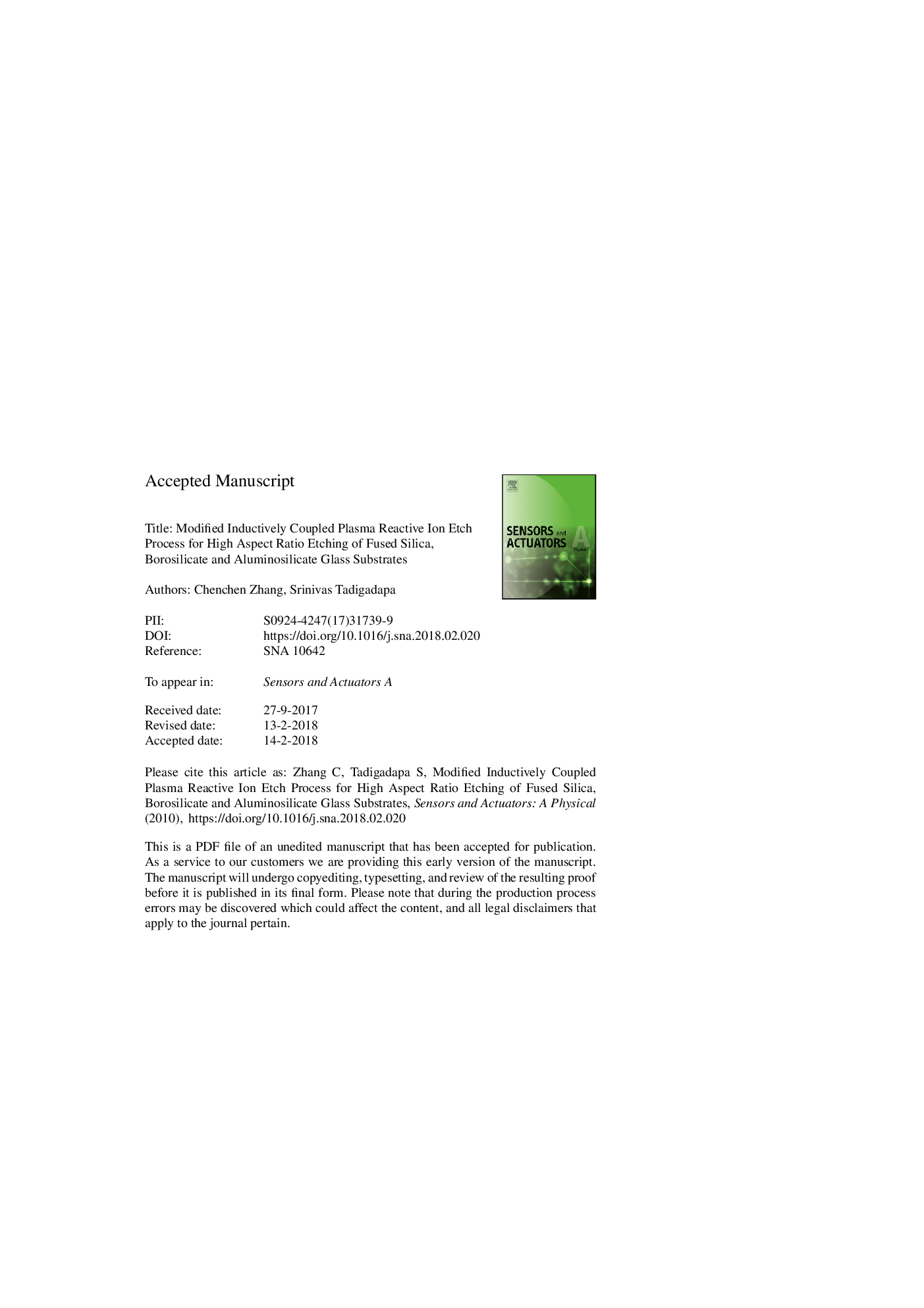| Article ID | Journal | Published Year | Pages | File Type |
|---|---|---|---|---|
| 7133560 | Sensors and Actuators A: Physical | 2018 | 25 Pages |
Abstract
We report on the etching of glass substrates of various compositions in a modified inductively coupled plasma - reactive ion etch (ICP-RIE) tool using SF6 as the plasma source gas and NF3 and H2O gases introduced downstream near the surface of the wafer through a diffuser gas inlet. Using this modified system, we have been able to achieve etch rates as high as 1.06â¯Î¼m/min, 1.04â¯Î¼m/min, and 0.45â¯Î¼m/min with surface smoothness of â¼2â¯Ã
, â¼67â¯Ã
, â¼4â¯Ã
for fused silica, borosilicate glass, and aluminosilicate glass respectively after 5â¯min etches. We examine the role of ion flux and fluorine radicals and molecules on the etch rate and the etch smoothness. We analyze the results obtained on 41 etches through multivariate statistical analysis and use the Pearson coefficient and P-value to determine the importance of these parameters for each of the glass substrate compositions. Overall for all three glass compositions, etch rate is critically influenced by ion flux. Fluorine based radicals and molecular fragments influence both the etch rate and surface smoothness of fused silica whereas they primarily influence the surface smoothness for borosilicate glass. The large fraction of impurity atoms of Ca and Al in aluminosilicate glass form non-volatile fluorides in the etched areas and therefore the etch rate and surface smoothness of aluminosilicate glass is primarily influenced ion flux and very little by the fluorine chemistry. We also examine the role of the layout of the metal mask layer on how it influences the charging of glass substrates during etching and therefore the etch rate.
Related Topics
Physical Sciences and Engineering
Chemistry
Electrochemistry
Authors
Chenchen Zhang, Srinivas Tadigadapa,
